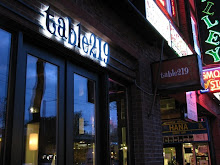Believe it or not, we've already reached the end of January, right in the heart of winter. Now is the time for deep, hearty dishes that soothe the soul for when the days are short and the skies are dreary.
I have always loved Tex-Mex food; I still return to the same local chain from my childhood called "Tumbleweed" whenever I visit my hometown. While it is inarguably one of the most definitive American cuisines, I have always shied away from Tex-Mex despite these facts, perhaps due to certain celebrity chefs who have overextended the cuisine. Now is the time to break free from that reluctance.
Every since the last time I used ancho chilies, the mild, dried poblano, I have been in love with them. Not only do they have an amazing, complex flavor of raisins and tobacco in the same way that good wines do, but they also have a very low Scoville rating, the scale used to rate the heat in chiles, allowing those of us who can't tolerate a lot of spiciness to still enjoy the flavor.
I used this great chile along with a hearty beef stock as a cooking medium for beef brisket to make good on my promise from last week to showcase another one of my favorite cooking techniques: braising. By pureeing the dried chile pods with the stock before cooking the meat not only guarantees me a great sauce, but also infuses the flavor deep into the meat during the seven hour cooking process. After the meat is cooled I cut it into exact portions and strain the sauce, reserving it to reheat the meat to order.
Even more of a staple to southwestern cuisine than chiles is maize, or corn to you and me. Blue corn, a variety that dates back to before the European influence in the southern Americas at the end of the 15th century, is about 30% higher in protein than the commercial brands that dominate our country's agriculture. Though I've used it in a more traditional form by making tamales, I realized that it would be a great accompaniment to rich, braised dishes if cooked in the traditional Italian porridge-style preparation of polenta. I heated half-and-half with garlic and onion powder for flavoring before sprinkling in the blue cornmeal and allowing it to cook for a half hour or so. I cooled the mixture before pureeing it in a food processor to eliminate any lumps. Finally, to elevate the flavor that much more I finished the reheating of the blue polenta with a spoonful of creamy chevre goat cheese.
The mellow spiciness of the ancho really comes through when a little sweetness is present, but instead of adding sugar to the sauce I chose to saute seasonal broccolini, a hybrid of broccoli and Chinese cabbage, which also happens to be my all-time favorite vegetable. The natural sweetness of the broccolini really helps bring out the fruity flavor of the ancho chile, while its crisp stalks lend plenty of much needed texture to the dish.
Only those close to me know that last week my wife and I closed on our first house. Sure, we've owned our own apartment in the past, but this is our new home. We used the same husband and wife duo Larry and Lynette that helped us find our condo in Eastlake for our home search, and it's safe to say that we've couldn't have imagined better people to work with!!
After signing our final offer on this house, Larry (nicknamed "Eggplant", a.k.a. Edgar Plant) asked if I wanted a drink. Since knowing this man for nearly 3 years now, I knew that he had excellent taste in both music and booze, so I said, "Sure. Your choice."
He proceeded to concoct a combination of tequila, spiced rum and hot water swirled inside of a molasses jar. To be honest, I've never been fond of hot cocktails myself (cold beer is usually my preferred method of intoxication), but the unusual heating of tequila and spiced rum along with the complex molasses flavor really made an impression on me. So in tribute to another stage of my life I'm offering this drink special to those great people who've helped us get there, and for those of you who are adventurous enough to try this surprisingly delicious drink I offer you a 25% discount if you simply tell your server the codeword "eggplant"!
With Love,
Cheffrey


